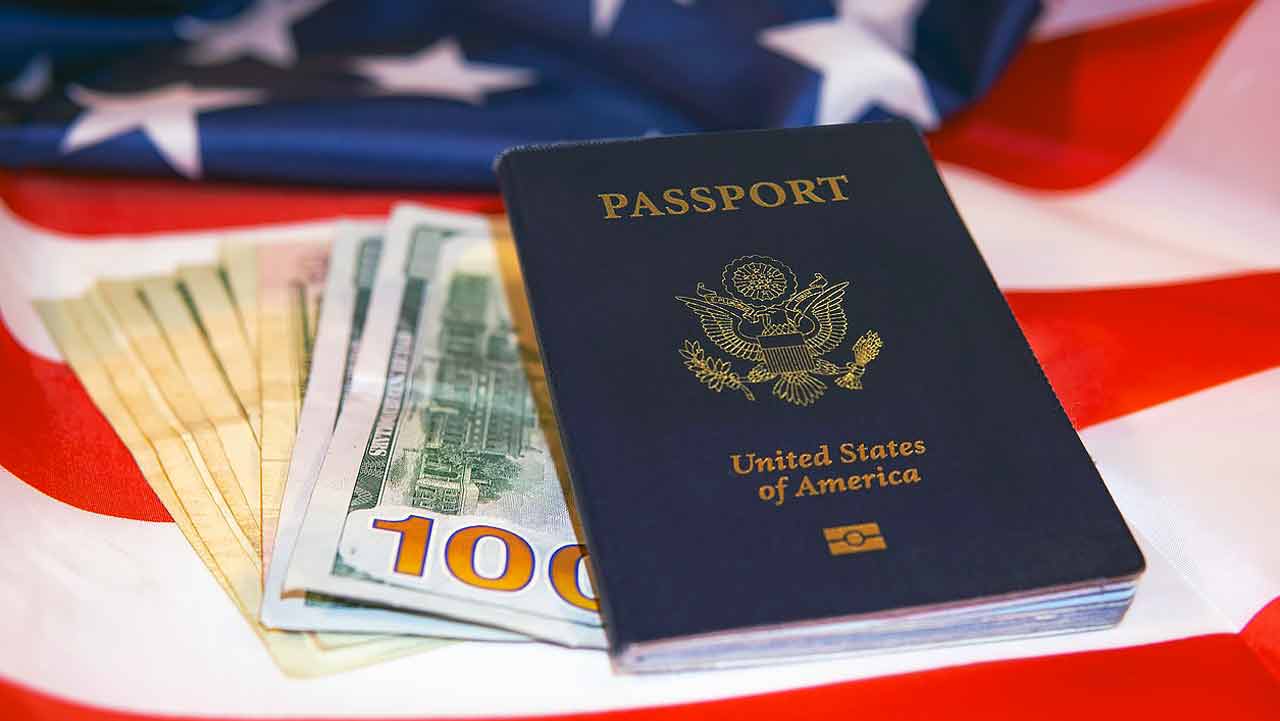After the K-1 Visa: A Guide to Adjustment of Status & Green Card

Congratulations, she’s finally here! After months of a long-distance relationship, your Filipina fiancée has arrived in the United States on her K-1 visa. This is a time for celebration, but it’s also the start of a crucial, time-sensitive legal process. The journey isn’t over; this is the final chapter in her immigration story. Successfully completing the adjustment of status is the key to securing her Green Card and starting your life together without worry.Navigating the U.S. Citizenship and Immigration Services (USCIS) system can feel complex, but it’s a structured path. This guide provides a clear, step-by-step roadmap to help your new wife adjust her status and obtain her U.S. Permanent Residence.
The 90-Day Clock: The Non-Negotiable Marriage Requirement
The single most important rule of the K-1 visa is that you must get married within 90 days of her entry into the United States. This is a strict, unbendable deadline that cannot be extended for any reason. The 90-day period begins on the date her passport is stamped upon arrival at a U.S. port of entry. Your first priority must be to plan your wedding ceremony within this window. For tips, you can review the guide to planning a wedding in the Philippines, which has principles that can apply anywhere. Once you are legally married, you can proceed with filing for her Adjustment of Status.
The Adjustment of Status (AOS) Application Package
After the wedding, you will file a package of forms with USCIS. It is crucial to file these together to ensure a smooth process. The core components are detailed below:
| Form Number | Form Name | Purpose |
|---|---|---|
| I-485 | Application to Adjust Status | The central application for her Green Card. You can find the official form on the USCIS website. |
| I-864 | Affidavit of Support | Your legally binding contract showing you can financially support your wife. Learn more in our I-864 guide. |
| I-765 | Application for Employment Authorization | Allows her to get a work permit (EAD) while her Green Card application is pending. |
| I-131 | Application for Travel Document | This is for “Advance Parole,” allowing her to travel abroad and return without abandoning her application. |
Feeling Overwhelmed? A Professional Service Can Handle It All
The immigration process, from the initial K-1 petition to the final Green Card, involves a mountain of paperwork and strict deadlines. If you prefer a hassle-free journey, a specialized agency can manage the entire process for you. Services like FilipinoVisa.com offer end-to-end assistance, including preparing all your paperwork, scheduling embassy interviews and medical exams, and providing continuous support.
They offer a free, no-obligation consultation to determine if you qualify for the K-1 visa petition.
Navigating the AOS Timeline: What to Expect After You File
Once you’ve mailed your comprehensive application package, the waiting period begins. You will receive a series of official notices and appointments from USCIS. Staying organized is key to a stress-free experience.
Expert Tip: Create a dedicated folder for all immigration documents. Keep every receipt notice, appointment letter, and piece of evidence in one place. This will be invaluable when you need to track your case or prepare for the interview.
Step 1: Proving You’ve Filed Correctly (Receipt Notices)

Within a few weeks of filing, you will receive official receipt notices (Form I-797C) in the mail. This is your proof that USCIS has accepted your case and that you have filed correctly and on time. These notices will contain your receipt numbers, which you can use to track your case status online. Keep these documents safe.
Step 2: The Security Check (Biometrics Appointment)

Next, your wife will be scheduled for a biometrics appointment at a local Application Support Center. This is a standard and straightforward part of the process where USCIS will take her fingerprints, photo, and signature. This information is used for identity verification and to conduct mandatory security and background checks.
Step 3: Gaining Freedom to Work & Travel (EAD/AP Card)

Several months into the process, your wife should receive her Employment Authorization Document (EAD), often as a “combo card” that also includes her Advance Parole travel permission. This card is a major milestone, allowing her to work legally in the U.S. and travel internationally. This is an important step in supporting your Filipina wife’s career goals as she integrates into her new life.
Step 4: The Final Hurdle (Green Card Interview)

The final step is the interview at your local USCIS office. The purpose is to verify that your marriage is authentic (“bona fide”). You will be asked questions about your relationship and life together. It’s essential to be prepared. For tips and common questions, see our Green Card interview preparation guide.
Approval and the 2-Year Conditional Green Card
If your marriage is less than two years old at the time of approval, your wife will receive a 2-year conditional Green Card. This is a standard protective measure. To get her permanent 10-year Green Card, you must jointly file Form I-751, Petition to Remove Conditions on Residence, during the 90-day window before the conditional card expires. You can learn more by exploring our complete collection of visa and immigration guides.
Filipina Brides Online



A Note on Safety and Scams
The immigration journey can make couples vulnerable. Be cautious of anyone asking for money unexpectedly. To protect yourself, it’s wise to learn how to spot and avoid romance scams.
FAQ: K-1 Visa & Adjustment of Status
1. What is the single most important rule after my fiancée arrives on a K-1 visa?
You must get married within 90 days of her entry into the United States. This is a strict, non-negotiable deadline that begins on the date her passport is stamped at the U.S. port of entry.
2. What is ‘Adjustment of Status’ (AOS)?
Adjustment of Status is the process of applying for a Green Card (Permanent Residence) after marrying on a K-1 visa. The main form for this is the I-485, Application to Adjust Status.
3. Can my wife work legally while we wait for the Green Card?
Yes, but she must first apply for and receive an Employment Authorization Document (EAD). This is done by filing Form I-765 along with your main AOS package.
4. Can my wife travel outside the U.S. after we file for AOS?
She can only travel if she first obtains an Advance Parole travel document by filing Form I-131. Leaving the U.S. without Advance Parole will be seen as abandoning her Green Card application. The K-1 visa itself is for a single entry and cannot be used for re-entry.
5. Why would my wife receive a 2-year ‘conditional’ Green Card?
If your marriage is less than two years old when the Green Card is approved, USCIS issues a 2-year conditional card as a protective measure. You must then jointly file Form I-751 to remove the conditions and receive a permanent 10-year Green Card.
6. What happens at the biometrics appointment?
At the biometrics appointment, USCIS will take your wife’s fingerprints, photo, and signature. This is a standard step used for identity verification and to conduct security and background checks.
7. What are the main requirements to qualify for a K-1 visa?
To qualify, you must be a U.S. citizen, and both you and your fiancée must be legally free to marry. You must intend to marry within 90 days of her arrival and have met in person within the last two years.
8. What are the most common reasons a K-1 visa is denied?
The main reasons for denial are lacking documentation, a lack of a genuine relationship, misrepresentation of facts, medical or criminal grounds, and potential public charge. A prior marriage for either party that has not been legally terminated is also a common reason for refusal.
9. Can my fiancée’s children come to the U.S. with her?
Yes, her unmarried children under 21 years old can be included in the K-1 petition and are eligible to apply for a K-2 visa. They can travel with her or follow her to the U.S. within one year of the K-1 visa being issued.
10. Is it illegal for my fiancée to enter as a tourist and then marry me to stay?
Yes, entering the U.S. on a tourist visa with the specific intent of getting married and staying is considered immigration fraud. This can lead to deportation and a ban from re-entering the United States.
11. Do I need to hire a lawyer for this process?
It is probably not necessary unless you have a very complex situation. Immigration is an administrative process based on filing forms correctly, not a legal one involving a court. Specialized consultants can prepare the documents, and lawyers are not permitted to attend the K-1 interview at U.S. consulates anyway.
12. What is the main benefit of using a professional visa service?
A professional service offers comprehensive, end-to-end assistance, which includes preparing and handling all the necessary paperwork for you. This ensures a no-hassle process and provides you with continuing support from qualified agents if you get stuck.
13. What is the purpose of the Green Card interview?
The purpose of the interview is for a USCIS officer to verify that your marriage is authentic and not just for immigration purposes. You will be asked questions about your relationship, how you met, and your life together.
14. What are the main forms in the Adjustment of Status package?
The main components are Form I-485 (Application to Adjust Status), Form I-864 (Affidavit of Support), Form I-765 (Application for Employment Authorization), and Form I-131 (Application for Travel Document).
15. Do I get my application fees back if the petition is denied?
No, all application fees paid to the U.S. government are non-refundable, regardless of the outcome.
Your Secure Future Together
While the adjustment of status process involves significant paperwork, it is a clear path to securing your wife’s permanent residence and building your life together in the U.S. without immigration worries. For a complete A-to-Z toolkit covering every stage of your journey, our Mabuhay Welcome Kit is your essential resource.

